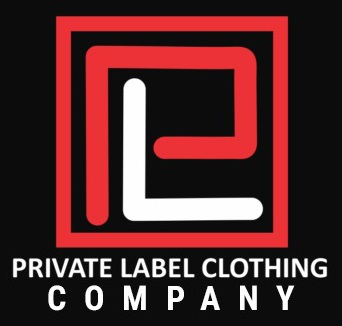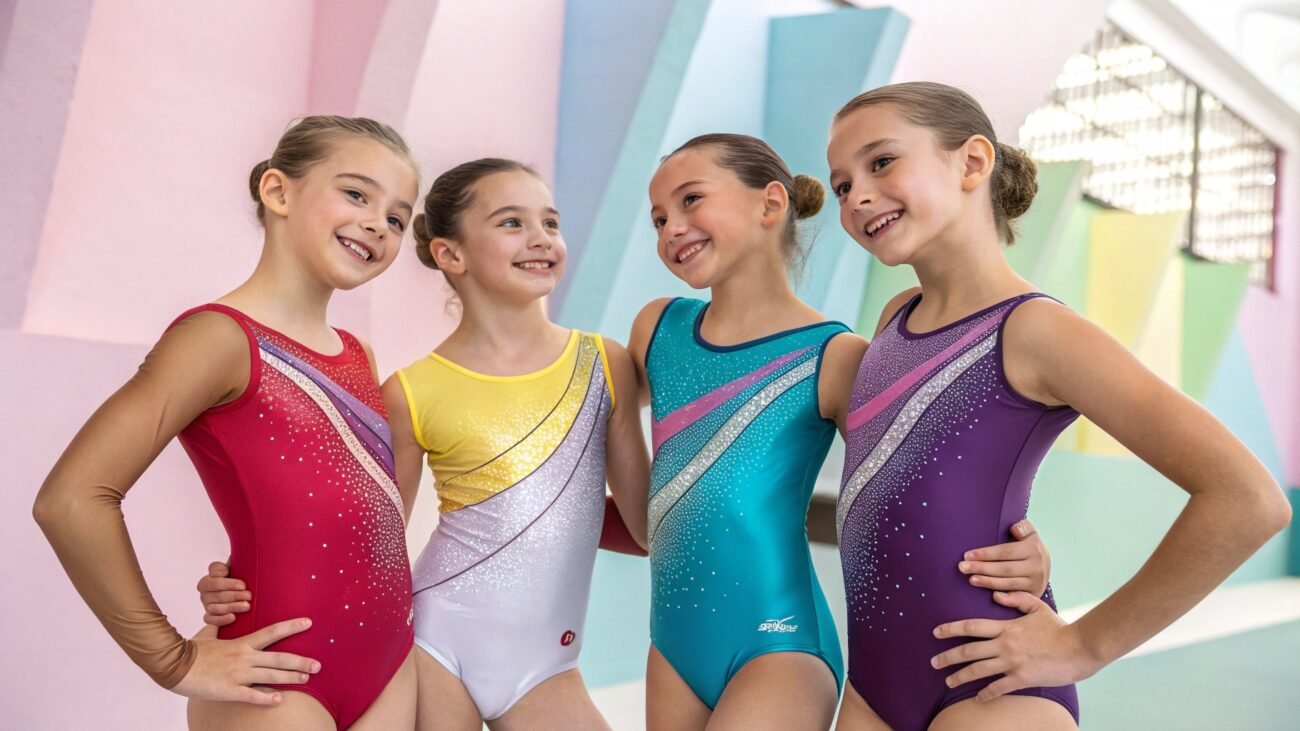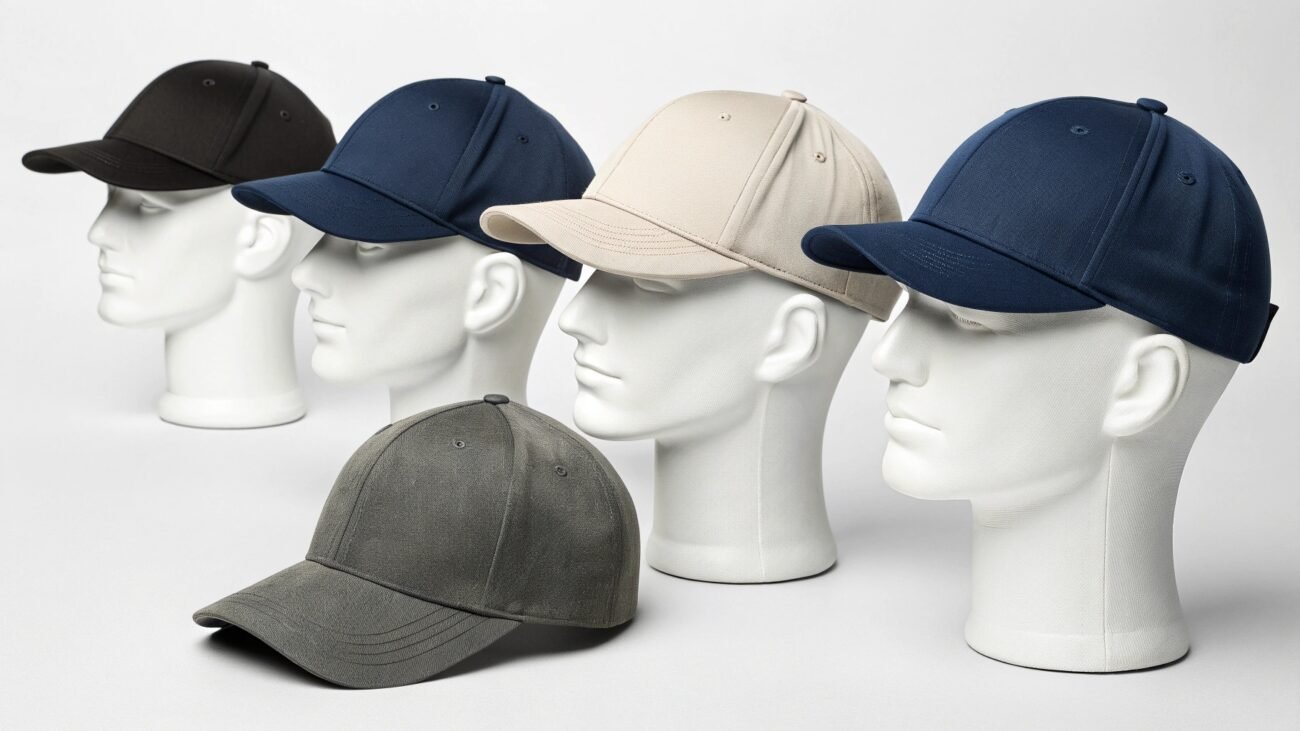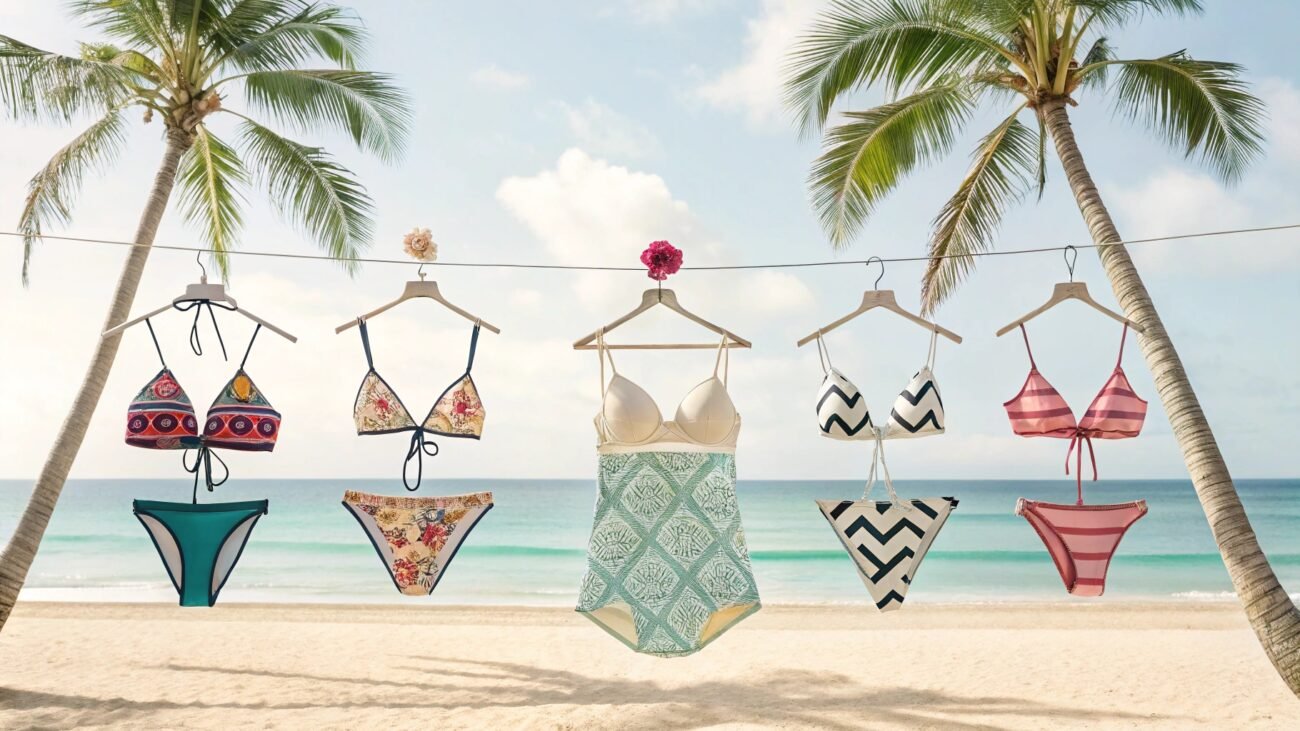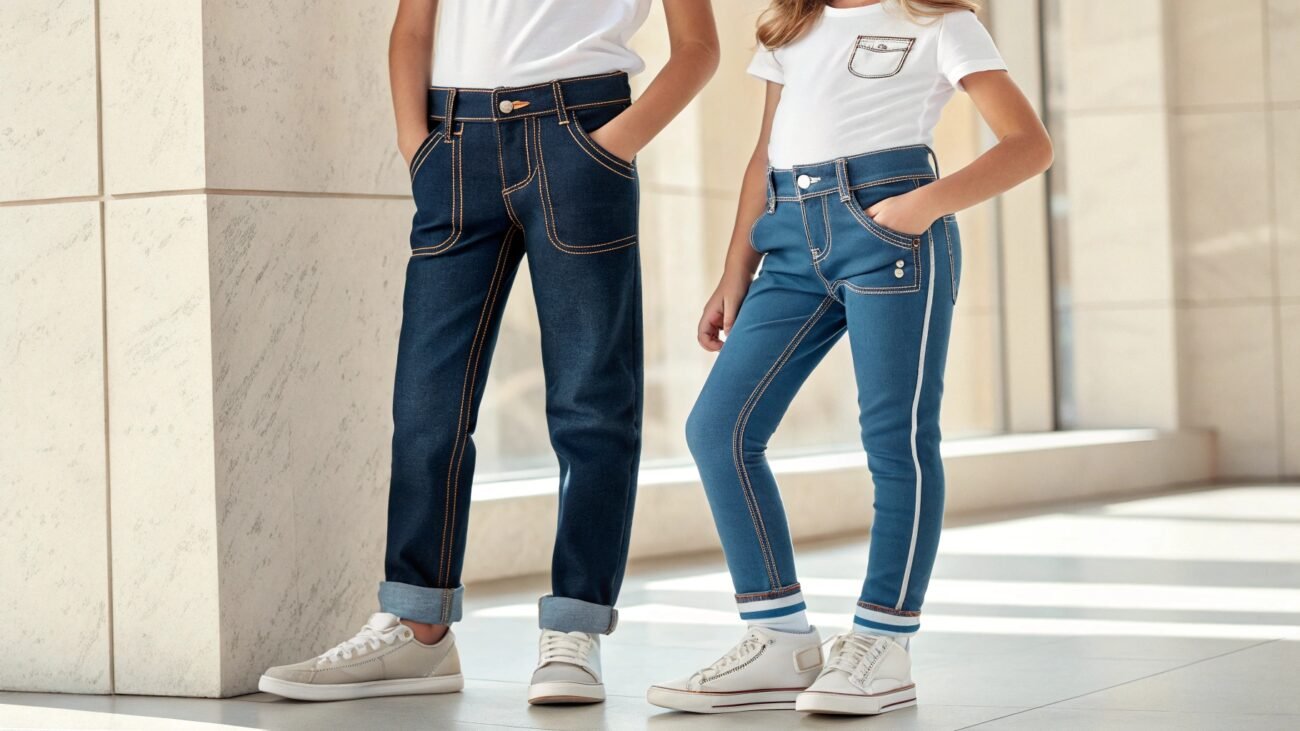Thinking about starting a custom clothing line-up but are not sure which niche to go for? Consider custom gymnastics leotards as there is ample room for profitability and growth in this corner of the industry.
Table of Contents
ToggleOver the years, leotards have grown not just in gymnastics but also among dancers. In fact, some people love to wear them as an underlying base because of their snug fitting and support.
Join Us on This Journey to Discover;
- Different Types of Leotards
- Why does personalisation matter so much?
- How can you design unique Leotards?
Why Should You Design Your Own leotards?
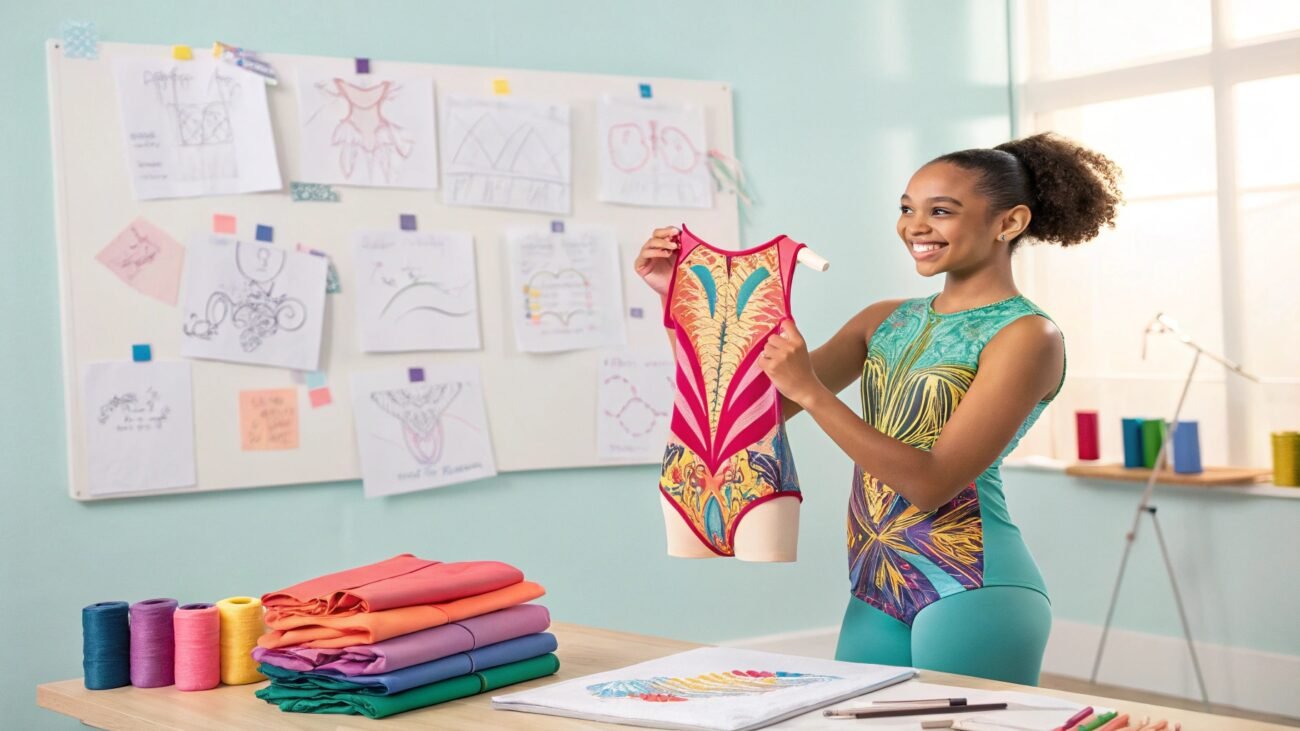
The market is filled to the brim when we talk about leotards, but despite that, there are several, if not thousands, of people who just don’t feel quite right in them. This is why fabricating your own sets of clothes can be extremely beneficial as you can have substantial control over the production.
You can pick the styles and fabric material, and even go for finishing treatments for your leotards. This will ensure a long patronage with your customers and allow you to be financially viable for a very long time.
Here’s why custom leotards are better than generic white labelled ones;
- Higher Quality & Durability
- Unique Styles for boosting Team Confidence
- Perfect Fitting & Comfort
- Personalized layouts
What Are Leotards?
A leotard is a properly fitted one-piece outfit that allows free flow of movement and offers exceptional body support. Most leotards are designed to cover the entire body except legs and are worn by acrobats, ballet dancers and even casual gym-goers.
How to Make Your Own Leotards:
Designing your own leotards can be a hassle if you are not well equipped with knowledge of garment crafting. However, we have devised a quick and concise guide for you to design high-quality Leotards.
Ideation & Designing:
The very first thing is to get your inspirations in one place, after pondering over potential benefits and resolutions, design your leotards in software tools such as Photoshop or Illustrator. This will be your “Tech Pack”.
Understanding Fabric & Sampling:
Afterwards, you need to select the right textile for your leotards and ask your chosen manufacturing partner to make a variety of samples, as it can tell you not just about the final product but also the capabilities of the vendor.
Negotiating MOQs and Pricing:
If your samples turn out to be as good as you may have imagined, then you begin discussing MOQs and final product costs to make a viable supply chain for your business.
7 Customizable Leotard Varieties to Grow your Business.
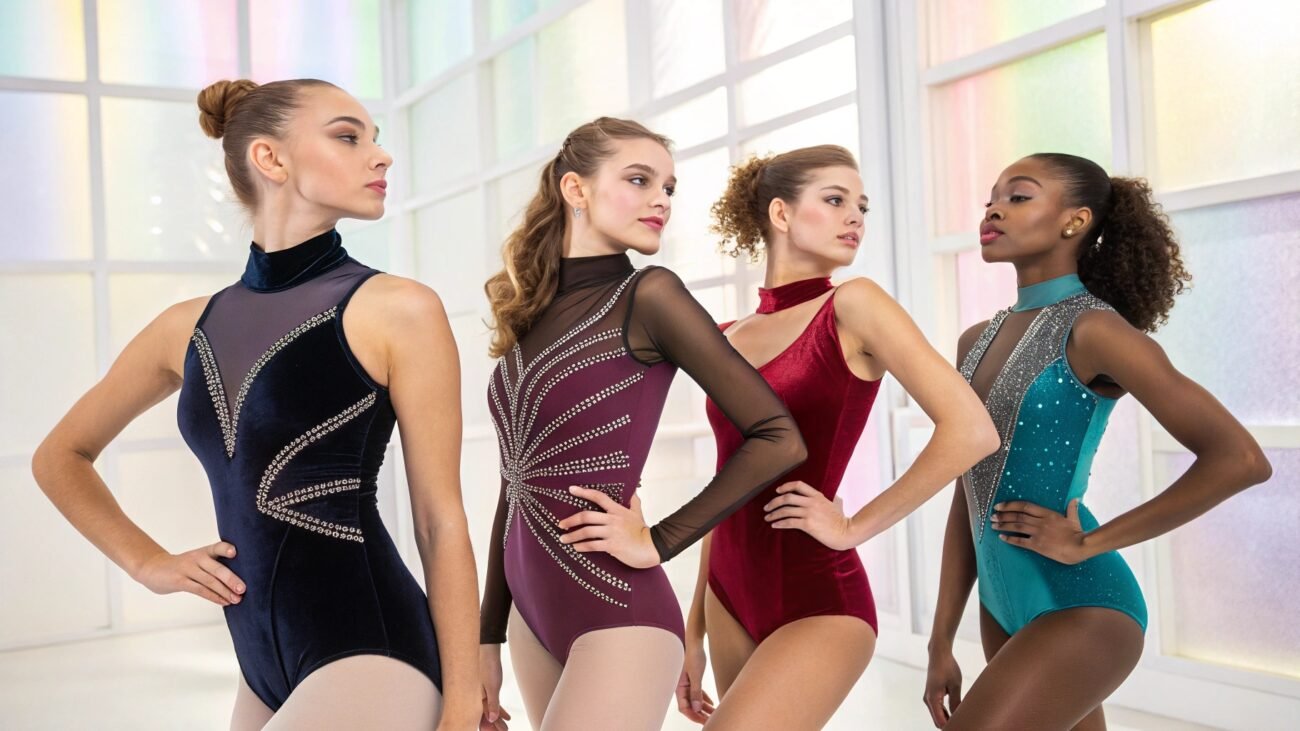
There are countless retailers who sell leotards every day, but most of them operate on seasonal selling, which means they often don’t have a loyal customer base, and you might ask why that is the case.
Well, think about it like this: Custom products tell a story that buyers can relate to, this provides them with a deeper understanding of the product and helps build a clientele which is not possible with mass-produced and unbranded clothes. This is why we believe that if you consider the types of different leotards, then you can set your business up for long-term success.
Experts Report: The Leotards market size is expected to grow to USD 1.8 billion by the year 2033, signifying a growth rate of 5.1% every year. This report should be enough to tell you how many business opportunities there are in this industry.
1) Convertible Leotards:
These leotards perhaps have the highest potential for personalisation as they offer adjustable straps and features which can transform into multiple styling options depending on the need. Convertibles are considered best for competitions where ballet dancers can change their entire look without changing their outfit.
Convertibles Can Be Worn As;
- Camisole Style
- X-Back Style
- Halter Style
2) Camisole Leotards:
A classic leotard style that comes with spaghetti-like straps over the shoulders and is popular among many dancers and acrobats due to its minimal seams and expression of free movement. Camisoles are a popular choice of custom dance leotards as they are characterised by their lightweightness and use of stretchy fabric blends, which are highly customizable.
Different Ways You Can Wear a Camisole Leotard:
They can easily be paired up with skirts and shorts, and even act as a layer under warm-up clothes, making them a highly adaptable piece of clothing.
3) Tank Leotards:
This style aims to provide an extra level of support without sacrificing leisure as it features thicker shoulder straps and built-in bra along with leg coverage. Due to the use of unique stretchy fabric blend and nylon, tank leotards are extra helpful during heavy routine performances.
Drawbacks: Tank Leotards can get very hot and sweaty if worn without underwear.
4) Long Vs. Short Sleeve Leotards:
Long-sleeve leotards offer a sophisticated outlook while keeping your muscles warm, and on the other side, short-sleeve leotards aim to provide a unique balance of coverage and flexibility, along with proper fitting.
Both options are great for their specific uses; if you are someone who regularly competes in competitions and desires a polished yet sleek look, then long-sleeve leotards are best suited for you, whereas short-sleeve leotards are a classic first choice for dancing lessons and even gymnastics.
Being some of the most popular leotard choices, manufacturers are often ready to provide quick and easy customisation solutions. In fact, you can check it out yourself.
Click Here: Private Label Leotards Manufacturers
5) Turtleneck Leotards:
A contemporary design used specially in ballet dancing, this leotard variation is defined by its high and close-fitting collar that extends up to the whole neck in order to provide extra coverage and warmth.
Turtleneck leotards come in various sleeve lengths, ranging from long format to even sleeveless iterations, each contributing to a specific sleek and elegant aesthetics required during rhythmic sports.
6) Skirted Leotards:
In this type, a skirt is directly attached to the leotard to offer an all-in-one garment experience, which is absolutely staple in ballet and lyrical dancing. Skirted leotards feature a design that garners a harmonious outlook and are popular because of their easy usability and snug fitting.
Some featured skirts are;
- Georgette Skirt: Light, flowy and often sheared to confer a delicate yet ethereal look.
- Mesh Style: Similar to a georgette skirt but with more stretch and layerable for a modernised appeal.
- Tutu: A multilayered tulle skirt that especially stands out during classical ballet performances.
- Short Skirt: This skirt has a simple yet practical design that comes with various fabric materials.
- High-low Design: Featuring a skirt type that is longer in the back to add a dynamic flow look.
- Asymmetrical Skirts: Artistic skirts with uneven hemlines for vogue aesthetics.
7) Mesh & Lace Leotards:
These leotards incorporate mesh panels and lacy embellishments for a fashion and functional viability. Mesh and lace leotards feature these delicate fabrics to add texture, visual interest, and a touch of daring elegance to emphasize their one primal focus, which is aesthetic appeal.
These leotards are frequently chosen for their artistic expression or, in some cases, for fashion-forward practice wear. Although fashion-centred, placement of mesh in strategic areas can provide breathability, which overhauls this type into a unique, balanced kind of functionality, yet still with a heavy focus on design.
– Types of After Production Customizations Available in Market:
- Color Variations
- Printed Designs
- Rhinestone & Sequins Embellishments
If you are looking for quick leotards recommendations then check out what redditors are talking about!
Which Custom Manufacturer Should You Opt for?
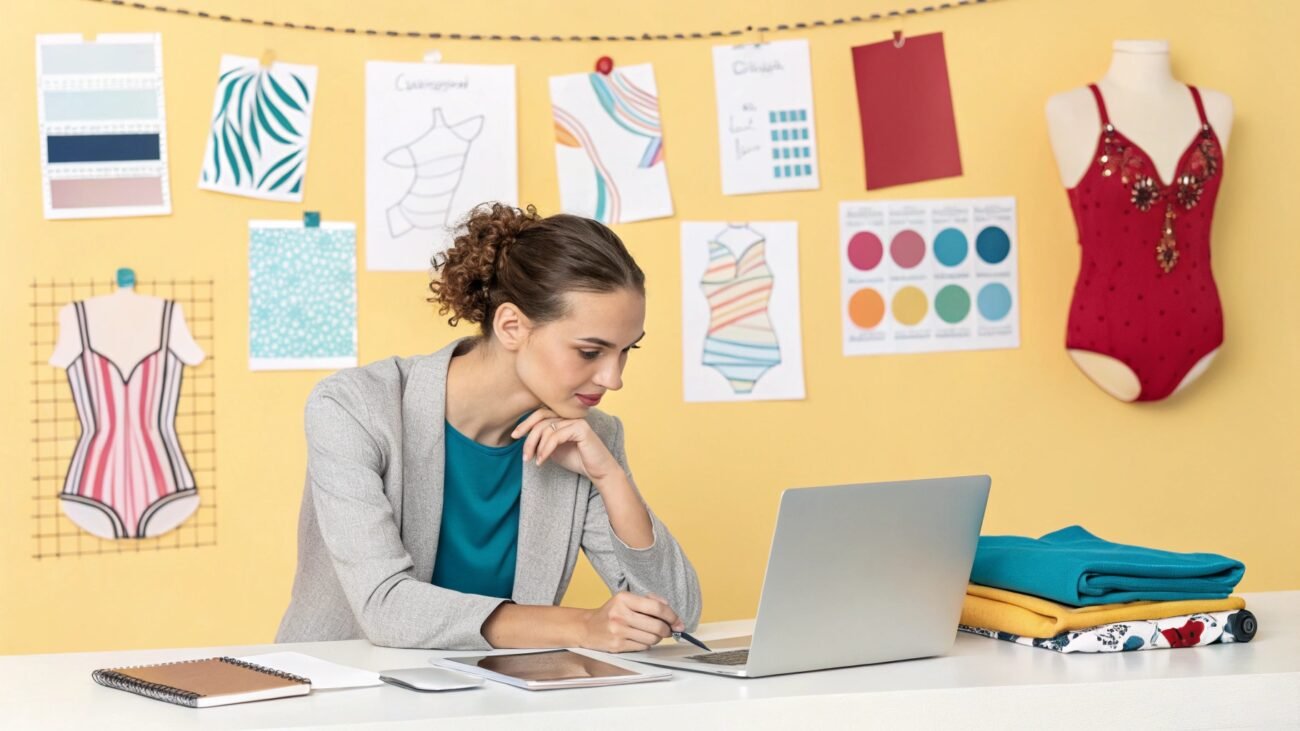
Assuming you have gone through the different styles of leotards and now want to start your own custom competition leotard gymnastics brand, what about the next step? Now, the plausible dilemma is about the manufacturers themselves. How do you figure out which vendors are going to benefit your business the most?
Consider this: there are many manufacturers in the world right now. However, each of them has their own business model, as some tend to provide high quality while others aim to dish out affordable products, albeit with compromised quality. Even though the manufacturing world is divided into two sides, there are still many vendors who provide balanced services.
There are some key aspects you should always consider before formulating a partnership with a factory;
Business Goal Alignment:
See if your potential partners are even in the same boat or not. Imagine you are thinking about providing an eco-friendly leotard solution, but your manufacturers are just eco-preserving for the sake of your order alone. Such a partnership would surely fail in the near future, as they wouldn’t even capture your brand’s essence to begin with.
Special Expertise:
Suppose you want to create professional long-sleeved leotards but with DWR coatings to battle cold weather, and your maker is not capable of doing so, then sadly, you will need to find a new manufacturer who can provide not just customisations but also finishing treatments to make your goods.
Previous Customer’s Reviews:
Getting in touch with previous customers is an excellent method to analyse your soon-to-be clothing producers. It tells you about their way of working and production process, and even lets you evaluate if they are governmentally compliant or not.
Budget & Quality:
Perhaps the most prominent aspect to look for in a possible partnership with manufacturers, think it through, your chosen factories are all standing true to your demands, but what about your investment budget? Suppose you want 100 pieces of custom ballet leotards at cheap rates, but you are offered extremely high prices, and even if you manage to pay them, it will eventually lead to your downfall.
So consider carefully. We recommend documenting your needs, prices from makers, and expected sales to figure out your perfect manufacturer.
If you want a thorough guide on custom clothing vendors and how their production process adds up to higher revenue demands then it is highly advisable to read this blog.
Click Here: Clothing Manufacturers For Startups: From Development to Production
Fabric Options for leotard Costumes
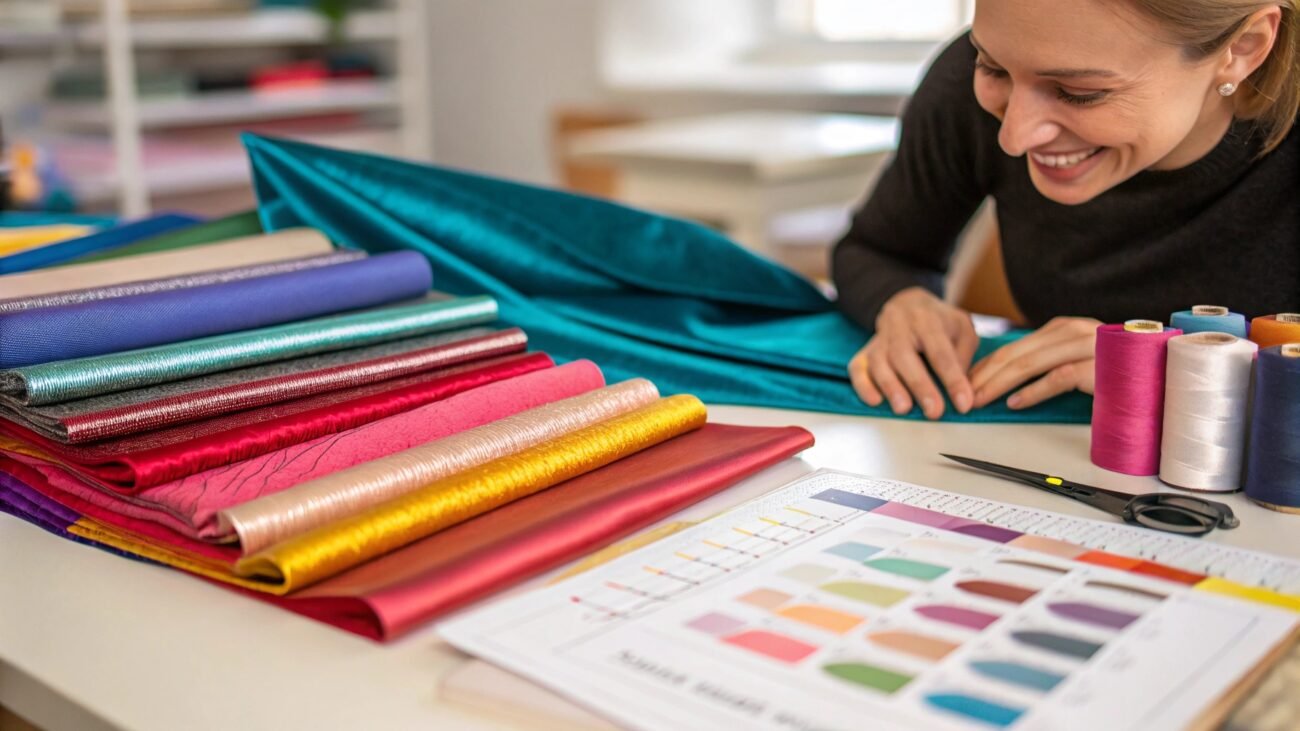
There are many fabric choices for custom leotards, each contributing to a specific set of functionality and feel. However, when it comes to leotard manufacturing, most of the time blended fabrics are used as blending contributes not just to the enhanced benefits but also to marginally low prices.
Can’t Find the Right Leotard Manufacturers?
Consider us, as your custom Leotard factory. PLCM aims to provide not just low MOQs but also Premium quality garments for your brand. For us, your success is our ultimate virtue.
Take a look at the table below to decide the best fabric option for your low MOQ custom leotards order from us, as PLCM aims to provide not just quality but also promises on affordable 24/7 servicing.
| Fabric Type | Qualities | Commonly Used For |
|---|---|---|
| Nylon/Spandex | Excellent stretch, durability, smooth & shiny finish | Convertible, Camisole, Long-sleeve, Short-sleeve, Skirted, Mesh & Lace Leotards |
| Polyester/Spandex | Good stretch, vibrant color retention, shrink & wrinkle resistant | Convertible, Tank, Long-sleeve, Short-sleeve, Turtleneck Leotards |
| Cotton/Spandex | Highly breathable, hypoallergenic, moderate stretch, high comfort | Camisole, Tank, Short-sleeve Leotards |
| Microfiber | Soft, breathable, excellent moisture-wicking, matte finish | Camisole, Tank, Short-sleeve Leotards |
| Velvet | Soft & luxurious texture, good stretch, rich appeal | Long-sleeve, Turtleneck Leotards |
| Mesh & Lace | Textured, breathable, visually striking | Skirted, Mesh & Lace Leotards |
| Tricot | Smooth & shiny surface, good stretch | Short-sleeve, Tank, Camisole Leotards |
| Mystique | Shiny & eye-catching appearance, moderate durability | Long-sleeve, Turtleneck, Skirted, Mesh & Lace Leotards |
Disclaimer: The above-mentioned details are just general guide fabric guides, as leotards can have different material panels depending on needs. One such example is: Mesh skirted leotards with mystique.
Final Words
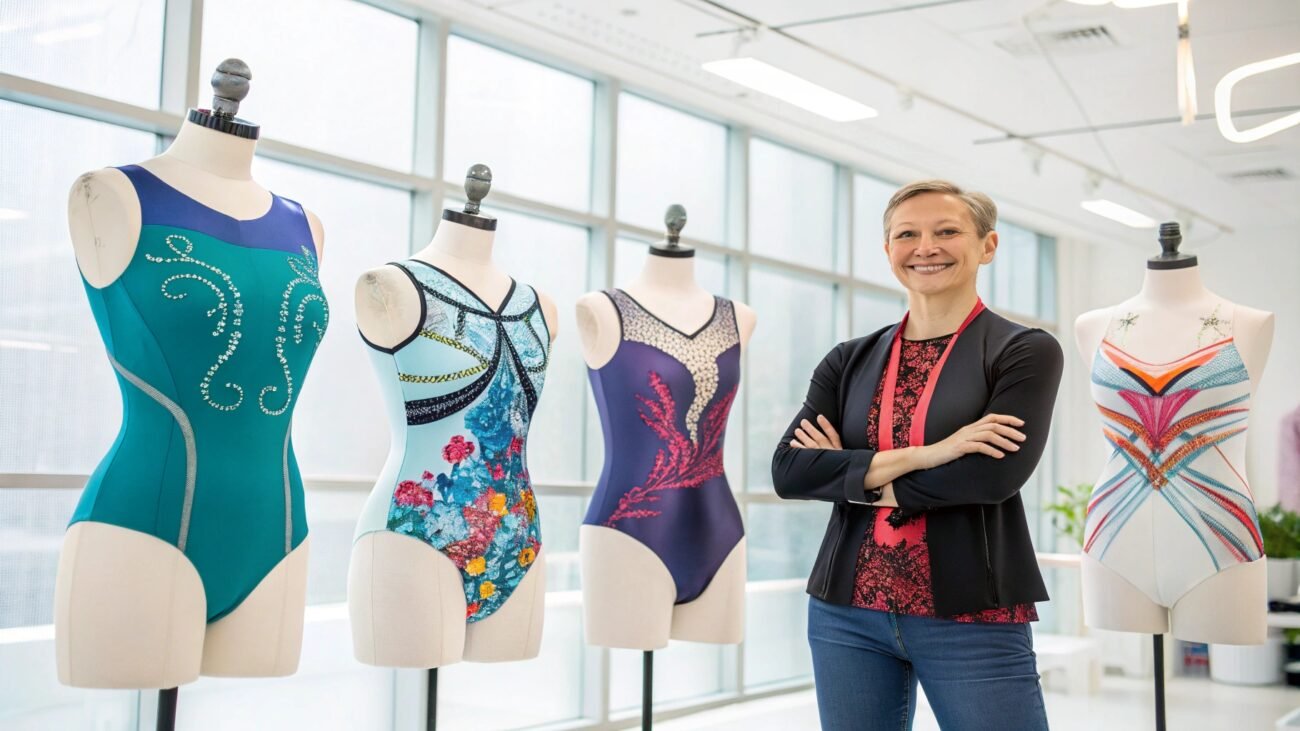
Leotards have become alarmingly widespread in 2025, filling a wide gap in the industry, which can be filled with many brand aspirants. Knowing the multiple types of leotards can set you up for long-term success, as emphasis on customisation and unique styling allows businesses to stand out from generic offerings, promising sustained profitability and growth in this expanding industry.
However, be very attentive when planning to form a partnership with a manufacturer, as this can either make or sully your brand’s vision.
Common Questions
1) How should a leotard fit?
Leotards should be snug but not movement restrictive; if your leotards block the flow of movement, then it is bad news.
2) Which leotard design is best for everyday practice?
Although it heavily depends on your preferences, Camisoles and tanks are highly popular due to their comfort and versatility.
3) How do custom leotards differ from generic ones?
Custom-made leotards offer perfect fitting and use of higher quality material, which leads to better cosiness and durability than generic-made leotards.
